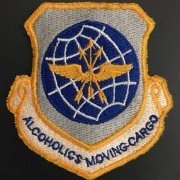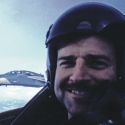
GW8345
Members-
Content Count
1,520 -
Joined
-
Last visited
-
-
You can use the Tamyia F-14 Kit #61122 to make an early 80's F-14A, just follow the build instructions for the VF-32 F-14A BUNO 159610. As for Sparrow station 5, even without the TARPS Pod installed (attached) that station would still be blanked off (plugged) so no matter if the pod is loaded or not, station 5 is plugged. The TARPS Pod didn't change it's shape while is was in service to my knowledge, it was just the internals that changed. Yes, the Tamyia F-14 Kit #61122 does come with the parts to blank off Sparrow station 5, they are parts M25 and M26.
-
You are 100% correct sir, I was thinking NATM and not NAIM. Honestly, I've never heard of a NAIM before so I did a little digging, looks like a NAIM is an instrumented CATM and is possibly a designation for test assets. Must be a new designation the wiz-kids at China Lake dreamed up (or the Air Force who is in charge of weapon designations). Doesn't surprise me, the wiz-kids in NavAir decided to call the AGM-154 JSOW an air to ground missile (AGM) even though it doesn't have a propulsion section (it's free fall), or how about the APKWS is still considered a rocket but h
-
NAIM - Inert warhead but live rocket motor. CATM - Inert warhead and inert rocket motor.
-
The biggest reason for removing the doors is to prevent them from going down the starboard intake when the basket knocked it off, which had happened several times early on. When the panel was knocked off, there was a large likelihood of it going down the going down the intake and FOD'ing out the engine (in a spectacular way!). We (the F-14 community) found this out the hard way during Desert Storm so after that, when ever we were going to be tanking from the Air Force we pulled the doors.
-
I can't speak for the F-35 but for USN aircraft in the 70's to early 2000's the short answer is, it depends on the aircraft and situation. In general; Ordnance Loading For shore based, the only time we left ordnance loaded overnight was if the bird was on the first event the next day and the time between the last event that evening and the first event the next day was short (less than 2~4 hours), and there was no maintenance required on the jet (other than a daily and servicing). We downloaded the jets when they were done flying for the day or at the end of
-
Majority of the time, if a squadron had the door removed from one of the jets, they removed them on all of their jets. I've never seen a squadron remove the door on just some of their jets, it was all or none.
-
Yes, you will need to fill in the oil drain holes (looks like a shower drain on the outboard left nacelle and inboard of the right nacelle, just above the forward end of the ventral fin), those are not present on the F-14B and D (i.e. F110 engine'd F-14's). Just fill the drain holes with putty and sand smooth. Along with changing out the cockpit, antenna (though if you are doing a late B you shouldn't need to change the atenna's) and chinpod, you will need to use the seats from the F-14A (the A and B had different seats than the D). hth
-
See Post #4; Additional info; http://www.topedge.com/alley/text/f14d/f14d.htm
-
I'm going to go out on a limb and assume the F-4C's wing tanks are the same as the Navy's so here's a link that might be helpful; https://tailspintopics.blogspot.com/2013/06/things-under-wings-f4h-f-4-phantom.html Also, to my knowledge, when the tanks were jettisoned the pylons would be jettisoned in addition the tanks via explosive bolts so there shouldn't be any breeches on the pylon. Hopefully one of our resident F-4 experts will chime in and correct me on anything I might be wrong.
-
The top picture is of a AERO-12C Bomb Skid on an AERO 33 Bomb Truck, the bottom picture is a AERO 21 Weapon Skid on an AERO 33 Bomb Truck. You would push the skid onto the bomb truck and using manually pump hydraulics "jack up" the weapon (skid and all) to the rack. The AERO 33 wasn't the easiest thing to use let alone move around on the deck and was deemed obsolete by the late 80's.
-
Some good sea stories, brought back a bunch of memories. IYAOYAS!!!
-
What color were the M47 WP bombs painted during SEA?
GW8345 replied to Drifterdon's topic in General Discussion
I believe that was FS 34558. Italian Interior Green - FS 34558 UA116, UA 116 Acrylic Matt | Lifecolor | 22ml (scalemates.com) -
Marine phantom with Tamiya F-4B?
GW8345 replied to Phil not the one already used's topic in Jet Modeling
👍 -
GW8345 started following Great Navy Hornet (and others) Weathering Ref Shot
-
Yes




